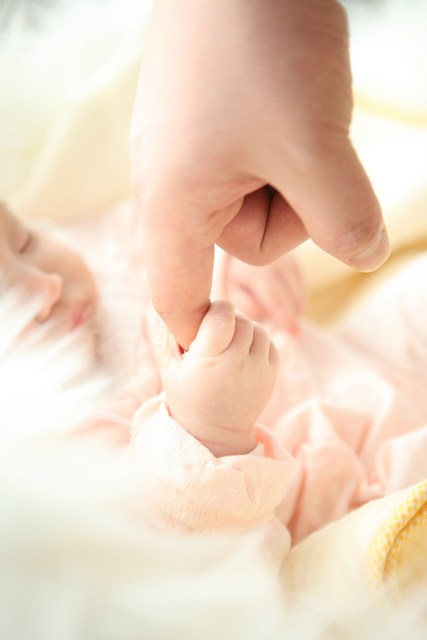
About 10,000 babies are born every year via egg donation: a process in which a woman agrees (typically for a fee) to have her eggs retrieved and used by another family to conceive a child. Some hopeful parents (“recipients”) choose known donors, that is, family members or friends to serve as their donors. But the vast majority are unknown, found through donor pools at IVF clinics, independent agencies, or frozen egg banks.
For medical purposes, doctors and the FDA make clear black-and-white distinctions between known and unknown donors. But the growing reality among recipients and donors is that “known” has many shades of gray.
Twenty or so years ago when clinics were the only source for egg donors, complete mutual anonymity between donors and recipients was the standard. Anonymity was one of the factors that allowed egg donation, then still new and unfamiliar, to flourish in the US. [In countries where anonymity is not allowed (such as Great Britain), egg donation is very limited (compensation is restricted there, too).] Guaranteed privacy and confidentiality encouraged women to participate.
Basic medical information was presented to recipients, but not current photos. Photos were off limits not only because they could theoretically breach confidentiality, but they could also “irrationally” sway the recipients’ preferences beyond the criterion of medical eligibility, the primary concern of their doctors. From a clinical point of view, any kind of openness, even photos, could threaten the whole arrangement. Anonymity kept clinics in control of the process.
Now that egg donation has become more commonplace and accepted, there are more sources for anonymous donors (such as private agencies and egg banks) which routinely show current photos. Those original confidentiality concerns were unfounded.
As the egg donor coordinator for an independent program, I guide recipients through our anonymous donor database, helping them make their choices. It is indeed a bizarre situation: the donor will have an intimate life-long connection to the recipient family, while the recipients have no idea who their donor is beyond a few electronically submitted photos and a written questionnaire. The donor typically gets no information about her recipient family, although she wants her donation to be successful.
And this prompts a very common question from recipients: “Would my donor be willing to be non-anonymous?” But “non-anonymous” means different things to different people, and it can take some consideration before determining what they really want. Anonymity is mutual, and so is non-anonymity. As curious as they may be about the donor’s identity, they may not necessarily want her to know who they are.
After giving it some thought, the typical recipient answer is “I just want to know if the donor would be open to contact with the child in the future, if the child wanted it.” They consider providing this opportunity for their child a matter of parental responsibility. A donor is typically amenable to this arrangement as long as she is assured her name and address would not be handed over to the child (who is a stranger to her) years from now. Instead, the agency (or another third party) would reach out to the donor on the family’s behalf. The donor cannot be contractually obligated to respond, but we can get a sense of her attitude on the issue now.
If recipients want some kind of immediate communication, it can be done by phone, email, video conference, or written letter without the exchange of full names. Both parties can even meet in person with pseudonyms or partial names. There is plenty of middle ground, and it is my job to negotiate the most appropriate format consistent with the intents of everyone.
Donors and recipients can customize hybrid known/ unknown relationships according to their own desires. I have devised a range of basic possibilities (but there are others as well):
Levels of Anonymity:
Complete anonymity: no photos/ baby photos only/ adult photos/ donor videos (no part of name revealed)
Mostly anonymous: sending the donor an unsigned letter, exchange of unsigned letters, donor open to contact in the future, knowing the donor’s first name
Non-anonymous: one-time meeting in person, exchanging full or partial names
Open: knowing full names with long-term contact
If both parties want to meet and exchange complete identities, that’s fine too. It is important that the desired “known” level is established before the match is made, so that expectations are met on all sides.
In my experience, doctors do not consider egg donation much beyond the petri dish. But these real-life connections are of utmost importance to families, and they are taking control of their part. Social workers and advocacy groups such as the Donor Sibling Registry (where donors and children endeavor to connect) are helping families reclaim their right to information that doctors had always considered highly classified and top-secret. As it becomes more routine and widespread, the stigma of egg donation is fading away along with mandate for strict unknown arrangements. I believe the trend will continue, perhaps along the open adoption model, where the match is mutually known from the start.